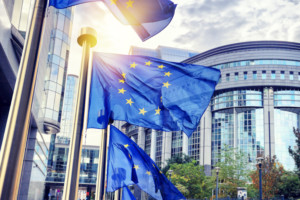 After the publication of its European Green Deal (Annex) in early December last year, the European Commission (EC) recently issued one of the deal’s key deliverables: the new Circular Economy Action Plan (nCEAP). Amongst several other crucial elements, whose publication was scheduled for March, the nCEAP is of special significance for the bioplastics industry. European Bioplastics (EUBP) welcomed the action plan as an ambitious step forward to transfer Europe into a real circular economy. It is very positive to finally see that the EC established a closer link between bioeconomy and circular economy. “As EUBP, we especially endorse the EC’s commitment to support the ‘sustainable and circular bio-based sector through the implementation of the Bioeconomy Action Plan’” says François de Bie, Chairman of EUBP, correspondingly.
After the publication of its European Green Deal (Annex) in early December last year, the European Commission (EC) recently issued one of the deal’s key deliverables: the new Circular Economy Action Plan (nCEAP). Amongst several other crucial elements, whose publication was scheduled for March, the nCEAP is of special significance for the bioplastics industry. European Bioplastics (EUBP) welcomed the action plan as an ambitious step forward to transfer Europe into a real circular economy. It is very positive to finally see that the EC established a closer link between bioeconomy and circular economy. “As EUBP, we especially endorse the EC’s commitment to support the ‘sustainable and circular bio-based sector through the implementation of the Bioeconomy Action Plan’” says François de Bie, Chairman of EUBP, correspondingly.
However, the European Union’s approach to achieve a circular economy still needs readjustment: As to on-going and planned initiatives regarding plastics, notably with a focus on packaging, the Commission’s approach still needs to be more differentiated. “While we certainly support measures to reduce (over)packaging and packaging waste as well as the drive to design packaging for re-use and recyclability, a mere focus on mechanical recycling and on introducing quotas for the use of recyclates is jumping to short” states de Bie. This is particularly the case when it comes to food contact materials. The announced establishment of rules for the safe recycling of plastic materials into food contact materials other than PET will not solve the health and safety issues associated with the use of recyclates. This applies in particular to the short to medium term. “There is a good reason why, today, recyclates other than PET are not admitted as food contact materials, as, currently, there is no way to guarantee the elimination of potentially hazardous legacy materials. Therefore, we strongly encourage the EC to support the use of sustainably sourced bio-based virgin material for packaging requiring food contact approval. This should be reflected in, for example, the guidance on eco-modulation of EPR fees.”
Another key element of high relevance for the bioplastics industry included in the nCEAP is the explicitly expressed commitment by the EC to assess bio-based as well as biodegradable and compostable plastics in order to determine which applications may be beneficial to the environment. “We are convinced that a thorough assessment of EN 13432 certified biodegradable and compostable plastics packaging will eventually come to the conclusion that there are quite a few applications where compostability makes perfect sense”, comments François de Bie. Packaging, which is prone to be highly contaminated with food waste, will not be mechanically recycled. Instead, in most cases, it will be incinerated or, even worse, landfilled. Compostable bioplastics help divert organic waste from landfills. The remedy can only be to allow such packaging to be composted together with the separately collected biowaste. “Compost from separately collected bio-waste is an extremely valuable soil improver and nutrient supplier. It plays an important role in a circular economy by closing the organic cycle. We therefore welcome the mandatory separate biowaste collection by 2023“, states François de Bie.
EUBP is especially looking forward to the development of the framework for bio-based as well as biodegradable and compostable bioplastics announced in the nCEAP. As several on-going studies are considerd to contribute to the development process, it remains to be seen how the framework will look like. European Bioplastics will actively accompany the process.